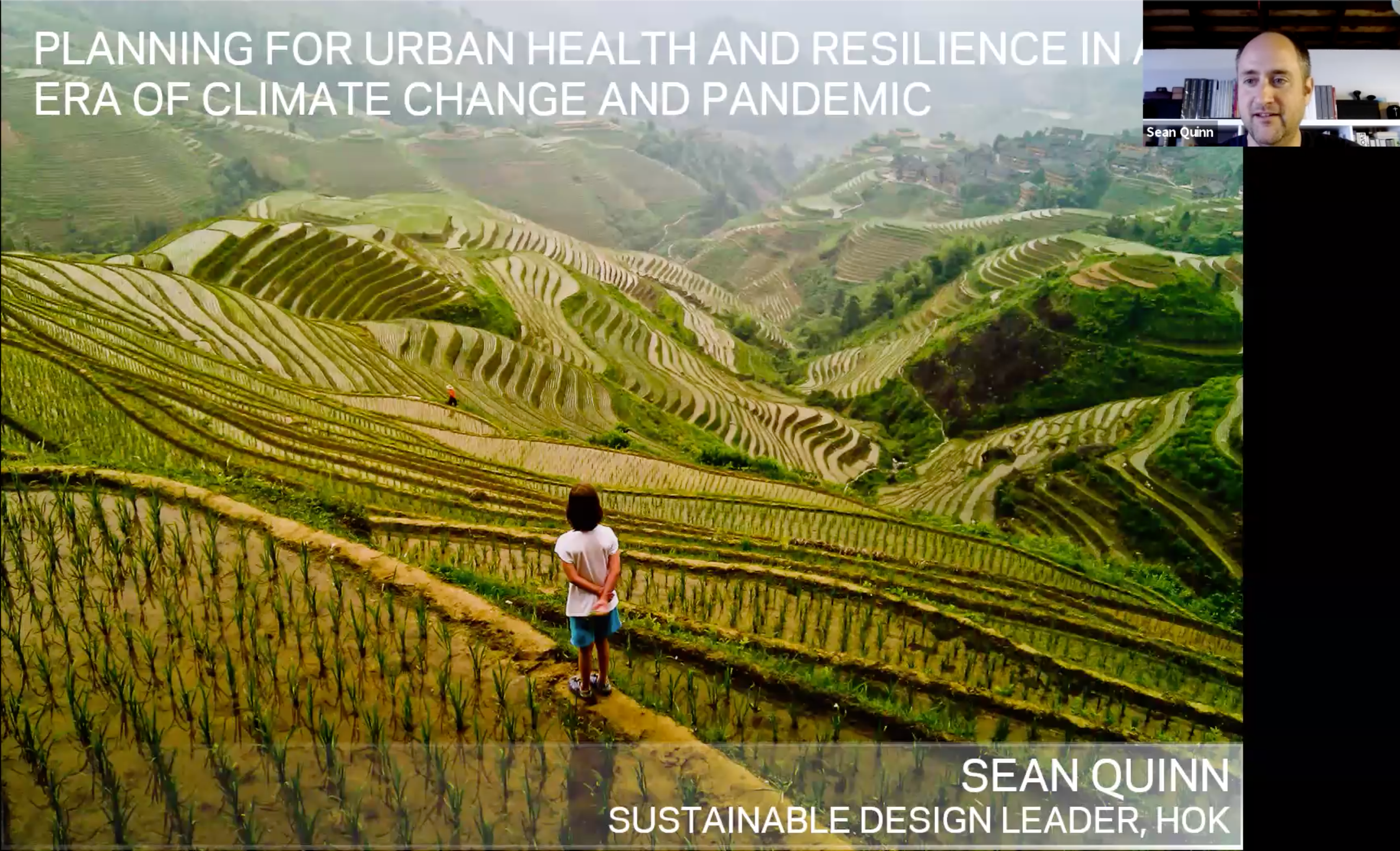Urban Planning for Health

On February 25, 2021, the program welcomed Sean Quinn, the Sustainable Design Leader for HOK’s Pacific region, cofounder and former chair of HOK IMPACT. Quinn addressed the Georgetown community as part of the Urban Health Collaborative Speaker Series with his lecture, “Planning for Urban Health and Resilience in an Era of Climate Change and Pandemic,” which addressed the ways in which science can be used to inform sustainable urban design and architecture to protect the health of communities both in the present day and moving into the future.
To begin, Quinn discussed rapid urbanization through powerful images of cities like Shanghai and Guangzhou in the 1980s and juxtaposed them with images from today, where rapid growth has led to both extreme opportunity and extreme challenges.
Quinn maintained that planning for urban health is critical in designing cities to withstand the challenges related to climate change and future pandemics. The destruction of habitats and loss of biodiversity that occurs due to urban development plays a dramatic role in the spread of diseases. Quinn stated that in the future, pandemics like COVID-19 may no longer be a once-in-a-century phenomenon, but a continuous threat to human life. Considering the ongoing threats of climate change, infrastructure challenges, flooding, air quality, water sanitation, and unstable services, architecture and design must learn to work with challenges rather than against them in order to protect urban communities.
In his design approach, Quinn discussed three main objectives when planning for urban health: understanding the energy and health nexus, utilizing fully integrated thinking (FIT), and bridging the gap to align the development processes with scientific findings. The FIT model works to solve complex problems through leveraging interdependence, optimizing rather than maximizing, integrating cyclic processes, and finding solutions that are attune to culture, climate, and cost. It is with these objectives in mind that Sean has been able to help cities like Wuhan, China plan for and address community specific issues with big picture solutions.
To conclude, Quinn discussed ways forward through the example of his project with Mare Island in San Francisco, California. With Quinn’s help, Mare Island is hoping to be the largest net zero energy district in the United States, while also resilient to sea level rise and king tides. Using nature as a design tool and creating development projects that focus on positive performance, like his work with Mare Island, Quinn hopes that urban developments can be designed to not only do less harm, but actually provide for the ecosystems in which they reside. Through concepts like regenerative design, biomimicry, and focusing on intersystemic goals, that vision can become a reality.
The Georgetown Urban Health Collaborative thanks Mr. Quinn for discussing the ways that urban design and health intersect and the innovative ways in which we can help protect urban communities around the world. A recording of the lecture is available, please email urbanhealth@georgetown.edu .
